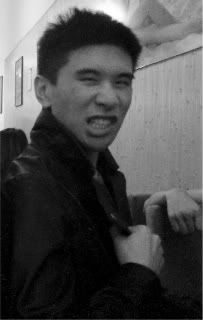Exploration of Hyphenation in Pham’s Journey
Andrew Pham, author of Catfish and Mandala, creates an interesting pattern in his book by using hyphenations for each chapter, excluding prologue and epilogue. These titles can truly give a glimpse of the content of the chapter. In taking a look at the purpose of Pham’s hyphenations, there are many conclusions that can be made. One of these conclusions can show how Pham’s portrayal of contrast of words is actually a comparison of the polarized words. Catfish and Mandala explore the validity of these hyphenations and the conflict it can create for oneself, place, or time. Each hyphenated chapter title is carefully dictated in the novel, making sure that both words between the one single dash carry a depth of story within itself. Though, leaving one word to stand on its own is a futile attempt to portray a great sense of meaning in Pham’s journey. To become more effective, both words are significant as a whole. For example, a repetitive chapter title, Fallen-Leaves is used to describe the time and story of the chapter: “An missed sitting on his father’s lap for stories-a memory of beer breaths of which great voyages sailed.” (216). [Q] Pham depicts, in the chapters titled Fallen-Leaves, his childhood that has been lost and fell from his life, and with each chapter, it is renewed like a new grown leaf on a tree. Another example of Fallen Leaves can be found in Pham’s experience playing in a homemade fort:
The boots stood close to the high heels, woman giggling, man laughing roughly. Wet mouth sounds. Perfume. Clothes going boneless to the floor. Bare feet stepping on each other. Skinny woman legs. Blonde hair man legs. Giggling. (287). [Q]
In this scene, the Fallen-Leaves chapter title is used to define lost innocence, as a new leaf falling from the mother, the tree. Fallen-Leaves is sturdy enough to stand on its own to define something or someone.
Though knowing that hyphenations can portray a single word or definition, there are times where one of the two words can stand out to a certain reader. Foreign-Asians is an example of how Pham emphasized on the word foreign in Foreign-Asians. He meets a man in a diner who attempts to ridicule and harass Pham and makes it clear that he knows of the purpose of all foreigners who come into the Vietnam
And now, with Minh gone from us, my greatest regret is our failure to make sense of those missing years. While he was with us, he left his personal history dormant, boxed in this new shell, this new being we didn’t comprehend… The vague sketch of Minh’s life I gleaned during my brief time with him seems trivial, more a testament to my stony core than anything attributable to him. (297) [Q]
The Minh in the title Chi-Minh is less significant that its counterpart, Chi, because as Pham describes Minh, he feels as though Chi could be the only person he could truly know, that this new Minh was someone he would have to be accustomed to because the tie that used to be his sister.
Pham also uses conflicting hyphenations showing struggles between the two words that are hyphenated. The Baptizing-Buddha chapter gives the background of Pham’s family struggle trying to connect two worlds together. The mother wants to stick to her traditional roots while the father wants to conform to the acculturation of their new church. This happens specifically during Christmas when the mother sneaks traditional Vietnamese ingredients into the turkey. (166). [P] The two religions and cultures of Buddhism and Christianity conflicted when the family felt they were betraying the grandfather. Some hyphenations can be multiple worded and still show the struggles between the words, such as: “Son is a womanizer, a photographer, a pimp, a Taoist, a poet, a Buddhist, a drunk, a Catholic, a polygamist, a philosopher-a dreamer.” (86). [Q] Andrew finds that Son is a man that is rare in the world because Son is many polarizing things at the same time. He becomes aware of this man who is not bound by just his Vietnamese culture, but a man who is able to encompass many cultural ideologies and much hyphenation.
The hyphenation shown in Catfish and Mandala is not only a concept used by Andrew Pham, but it can be placed in anyone else’s life. One hyphen that is applied in my life is queer-Asian. In the chapters of Chi-Daughter and Chi-Minh, Pham shows how he and his family keep Chi’s gender queer identity concealed. This is something that is true for most Asian cultures, and being queer is not something to speak about or heard of in the culture. The two words placed in hyphenation show the contrast and apparent conflict it could cause. A lot of my family seems to not recognize this side of me, while adults who are close to me and not Asian know of my queer identity and recognize it.
The hyphens that occur in Catfish and Mandala come about as a significant point in the story. The concept of using hyphens to describe the people, places, and events in Pham’s life is a dynamic tool used to give the novel an edge. The use is symbolic and poetic, showing the talent Pham has in writing and literature. Not only does Pham create these one worded figures for his story, but he uses them for his readers to create a dialogue outside his book. The reader can become closer to understanding themselves at the same time Pham finds himself in the book through the different hyphenations he encountered in his journey called Catfish and Mandala.

No comments:
Post a Comment